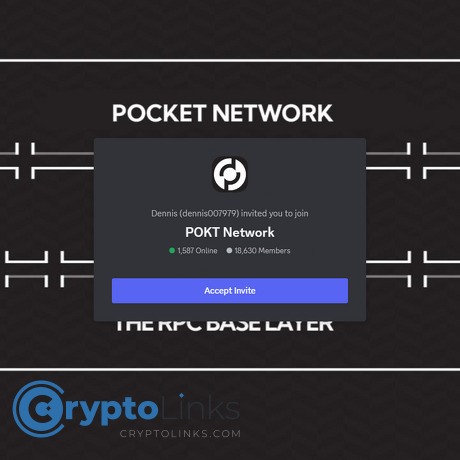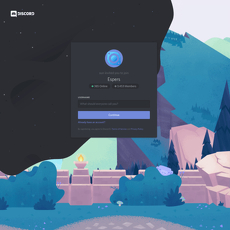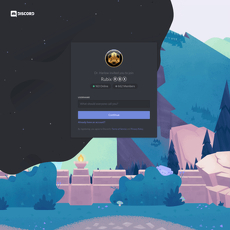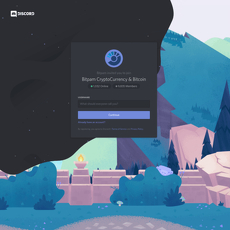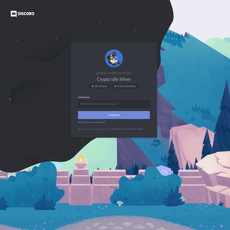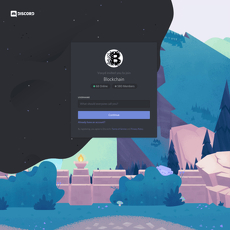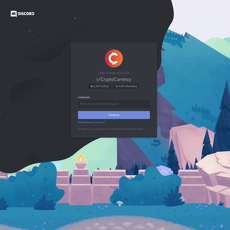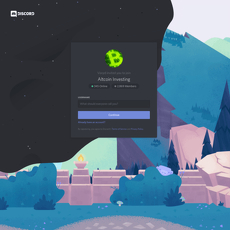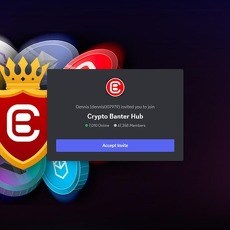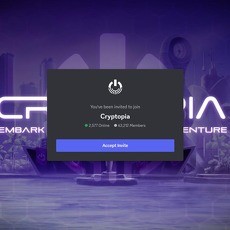POKT Network Review
POKT Network
discordapp.com
POKT Network Review Guide: Everything You Need To Know + FAQ
Tired of sudden RPC throttling, surprise bills, or outages hitting right when your users show up? Wondering if a decentralized network can actually power your app without adding headaches? If that sounds familiar, you’re in the right place.
I’ve spent years testing crypto infra for builders who just want stable, affordable, multi-chain endpoints that don’t fall apart during peak traffic. In this guide, I’m going to make POKT Network simple: what it aims to fix, who should consider it, and what you can realistically expect. No fluff—just the context you need to decide fast.
Need help from the source while you read? The fastest way to get real-world answers is the official POKT community: POKT Discord.
The problems POKT tries to fix
Centralized RPC can be great—until it isn’t. The cracks usually show up at the worst moments: mainnet rushes, big mints, or critical releases. Here’s what teams keep running into:
- Single-vendor risk: If your provider hiccups, your app does too. A classic example: the Infura outage in Nov 2020 disrupted MetaMask and many dapps across Ethereum. One company’s issue turned into everyone’s problem.
- Throttling and rate limits: Free tiers cap out fast, and even paid tiers can clamp down during spikes. NFT drops and L2 surges often trigger “429”s or silent latency creep.
- Unpredictable costs: Usage-based billing can surprise you after a successful campaign or a bot swarm. You’re forced to choose between overpaying for headroom or risking degraded UX.
- Multi-chain sprawl: Apps rarely live on one chain anymore. Managing separate vendors, dashboards, and limits across EVM chains and L2s becomes a time sink.
- Regional fragility: Outages or network partitions can ripple through a single provider’s regional footprint, while your users are global.
These aren’t edge cases. Broadly, outages are expensive—even outside crypto. The Uptime Institute’s 2023 Outage Analysis found a rising share of incidents costing over $100,000. In Web3, where trust and UX are fragile, minutes of downtime can undo months of growth.
What you’ll get from this review
- A clear picture of what POKT Network is (and isn’t)
- How its relays, token incentives, and gateways line up for real-world use
- What setup looks like for developers, without marketing fluff
- What running a node actually involves—infra, ops, and risk
- Strengths, limits, and how it stacks up against popular centralized RPC providers
Who this guide is for
- Builders shipping dapps that need reliable multi-chain reads
- Founders keeping a close eye on infra costs and lock-in risk
- Node operators assessing new revenue opportunities
- Curious users who want a credible, decentralized alternative to single-provider setups
Quick takeaway
POKT is a decentralized infrastructure network where independent nodes earn by serving blockchain data (RPC relays) to apps. The goal: cut costs, boost uptime, and avoid vendor lock-in. You can connect through easy gateways or go direct—either way, your traffic isn’t tied to one company’s cluster.
Want a faster, cheaper, and more resilient path to blockchain data without juggling five vendors? Keep reading. Next up: what POKT actually is, how it’s put together, and where it fits in your stack.
What is POKT Network?
Simple definition
POKT Network is a decentralized RPC infrastructure where independent node operators earn the native token POKT by serving your app’s blockchain requests (called relays). Instead of trusting a single vendor, your traffic can be routed across many nodes and chains, coordinated by POKT’s own blockchain and incentive system.
“The network is the computer.” — John Gage, Sun Microsystems
That line sums up why this matters: with POKT, the network itself becomes your resilient RPC backbone—scalable, multi-chain, and not tied to any one provider’s fate.
How relays work in plain English
Here’s what actually happens when your app calls an RPC method like eth_getBlockByNumber or eth_call:
- Your app sends a request to a POKT-powered endpoint for a specific chain (say Ethereum, Polygon, or a popular L2).
- The network routes that request to one of many available nodes that serve that chain.
- A node responds with the correct data—fast and accurately.
- The node earns rewards (in POKT) for doing the work, logged by the POKT blockchain for accounting and incentives.
Why this model is powerful: distributing requests across independent operators spreads risk and reduces the chance a single outage or region failure ruins your day. This aligns with lessons from distributed systems research—redundancy and parallelism reduce tail latency and outage impact (The Tail at Scale; Google SRE principles).
Key pieces
- Applications — that’s you. You send RPC calls and receive data across supported chains.
- Node operators — independent providers running full nodes/clients for various blockchains. They earn POKT for serving your relays.
- Gateways — easy on-ramps that give you HTTPS endpoints, routing, caching, and usage dashboards. They abstract token mechanics so you can just plug in and build.
- The POKT blockchain — the coordination and accounting layer that tracks relays, rewards, and network rules.
- Community governance — protocol changes and incentives evolve through an open community process, not a single company’s roadmap.
Think of it like this:
- You send requests.
- Gateways handle smart routing and reliability tricks.
- Nodes do the heavy lifting for many chains.
- POKT aligns everyone’s incentives so the service stays honest and performant.
Where it fits in your stack
I reach for POKT in two standout scenarios:
- Main RPC backbone: If you’re running a wallet backend, NFT indexer, or a data-heavy analytics tool reading from multiple chains, a POKT-powered endpoint gives you broad coverage and cost control without chaining yourself to one vendor’s cluster.
- Redundancy layer: If you already use a centralized provider, add POKT as a fallback (or vice versa). When a provider hiccups or rate-limits spike, failover to POKT reduces outage risk. This multi-provider strategy is a well-known way to improve uptime and tame “tail” performance issues, especially during surges or chain events.
Real examples I keep seeing from teams:
- Trading bots: Route reads across POKT to avoid throttling during volatile windows.
- NFT drops: Use a POKT-backed endpoint as the default, with a centralized provider on standby if you hit a hot block interval.
- Mobile wallets: Serve multiple chains (EVM + L2s) from a single endpoint layer with global routing.
- Explorers and dashboards: Cache common reads, then use POKT for fresh, multi-chain calls when cache misses happen.
I like that this setup maps cleanly to how the web already achieves reliability: spread the load, score performance, and keep two doors open. And yes, you can still monitor, log, and rate-limit just like you would with a traditional RPC vendor—gateways make that plug-and-play.
Quick gut-check: If a single provider outage would hurt your app, or if multi-chain RPC pricing keeps creeping up, POKT is built to attack those pain points head-on.
But here’s the kicker: what actually keeps nodes honest, prevents freeloading, and aligns costs with traffic in a fair way? And how much real reliability do you gain from the incentive design versus the gateway magic? Let’s unpack the reliability model, the token economics, and the security assumptions next—this is where the story gets interesting.
How POKT works under the hood (reliability, economics, security)
I care about two things when I’m shipping: do my calls land, and what’s the bill at the end of the month. POKT’s design tries to answer both with incentives that keep nodes honest, routing that spreads risk, and checks that favor fast, correct responses.
“Reliability is the quiet promise your product makes every time a user clicks.”
Incentives and fees
At its core, the economics are simple: nodes earn by serving your relays; you pay for access either directly (via protocol rules) or indirectly (through a gateway that handles payments and routing for you). The details matter, because they influence both cost and quality.
- How nodes earn: Independent operators run full/archival nodes for supported chains. When they return valid RPC responses on time, they earn POKT. Underperform and they get routed less or penalized under protocol/gateway rules.
- How apps pay:
- Through a gateway: The quick path. You pay in fiat or crypto; the gateway abstracts token flows, staking/allocations, and routing. Pricing varies by gateway, chain, and usage tier.
- Direct to protocol: You interact with allocations/stakes as defined by current rules. It can cut intermediary costs but adds operational work (keys, routing, observability).
- What determines price: gateway rate cards, your traffic profile (reads vs heavy logs/traces), chains you hit, and the network’s current reward schedule. Expect volume discounts and special pricing for bursty workloads from some gateways.
- Behavioral incentives: Nodes that keep latency and error rates low tend to get more traffic and rewards. Repeated failures, misconfigured clients, or dishonest behavior lead to reduced routing share and—depending on rules—temporary jailing or similar penalties.
Real talk: if your project swings from 200 to 8,000 requests per second during mints or airdrops, you want a model that can absorb bursts without punitive overage. Gateways on POKT typically smooth that out while still distributing load across many operators, not just one vendor’s cluster.
Reliability model
POKT spreads your traffic across many operators and geographies. That’s the core reliability advantage—fewer single points of failure. Gateways add a safety net on top.
- Many nodes, many regions: Sessions and routing spread relays across independent servicers. Regional routing helps keep latency predictable.
- Gateway failover and caching: Gateways commonly add health checks, automatic failover, and caching for hot reads (think getBlockByNumber, eth_chainId, gasPrice patterns). This cuts tail latency and protects you during partial network issues.
- Failure isolation: If one operator’s infra tanks, your traffic shifts to others. That’s a different failure story than being tied to a single provider’s incident.
Why this matters: centralized RPC outages happen. See the Infura incident history (notably Nov 2020) as a famous example. Architecting for multiple independent operators—instead of one vendor—reduces correlated failures when things get weird on mainnet days.
Performance and quality
“Fast” isn’t one number. You care about p95/p99 latency and correctness under load. POKT’s protocol checks and gateway scoring aim to push traffic toward nodes that answer quickly and accurately.
- Quality scoring: Gateways and protocol-level logic track latency, error rates, and response validity. High performers get more requests; laggards get less.
- Response validation: Mechanisms exist to discourage bad or malformed responses through sampling, hashing, or cross-checking strategies. Gateways may add their own validation layers on top.
- Tail latency matters: The slowest 1–5% of calls are what break UX. If you haven’t read it, “The Tail at Scale” (Google Research) explains why shaving p99 is everything for interactive systems.
- What to expect: Performance varies by chain, region, and gateway. Heavy calls like eth_getLogs or large trace ranges will always cost more time. Smart routing and caching can make these manageable.
In practice, I track:
- p95/p99 latency per method and chain
- Error rate by method (timeouts, invalid response, rate-limit)
- Relay success rate and gateway fallback rate
- Hot method cache hit rate (if your gateway exposes it)
Turn those into simple budget alarms. If eth_getLogs p99 jumps above your UX threshold for 3 minutes, trigger a fallback endpoint or switch to a narrower query window automatically.
Security and trust
POKT reduces vendor risk via decentralization and adds economic pressure to keep operators honest. Still, RPC is a trust interface. You should treat it with healthy paranoia for high-stakes flows.
- Decentralized trust: You’re not tied to one company’s cluster. Routing and incentives discourage nodes from returning bogus data; persistent bad behavior gets penalized.
- Validate what matters: For sensitive actions (signing, swaps, liquidations), consider cross-checking critical reads:
- Confirm latest block and nonce from two independent endpoints.
- Use block height monotonicity checks to detect reorgs or stale data.
- When feasible, verify proofs (e.g., Merkle proofs for logs/state) or rely on client-side light verification techniques.
- Reorg-aware logic: Don’t finalize on a single confirmation. Respect chain-specific finality rules; queue withdrawals or high-value actions to settle after safe confirmation windows.
- Rate limiting and sanitization: Enforce per-account and per-IP limits on write methods, and sanitize user-supplied filters for log queries to avoid expensive scans.
- Keys and secrets: If you go direct, store allocation keys in HSM or well-managed KMS, rotate credentials, and use scoped keys for staging vs production.
I’ve seen too many incidents that weren’t about the chain—they were about assumptions at the app layer. Treat RPC responses like any untrusted input. As the old line goes: “Trust, but verify.”
Want the exact setup I use to get production endpoints with smart fallbacks, tight budgets, and clean dashboards—without a week of yak shaving? That’s coming next: which path to connect, how to pick chains, and the small tweaks that keep costs tame while your UX stays fast. Ready to plug in?
Using POKT as a developer: setup, tooling, and best practices
Let’s get you from “curious” to “shipping” with a setup that’s fast, stable, and doesn’t torch your budget. I’ll show you the two real paths teams use, where they fit, and the practical tricks that make POKT-backed RPC feel invisible to your users.
“What gets measured gets managed.” — Peter Drucker
Connect through a gateway: the simplest path
If you want plug-and-play multi-chain RPC with clean dashboards and straightforward billing, use a gateway. You’ll get:
- HTTPS endpoints per chain you can drop into your app, SDK, or indexer
- Routing and failover across many independent POKT nodes
- Usage analytics (requests, errors, p95 latency) and alerts
- No token wrangling — typically pay in fiat or crypto
How I set this up for staging in minutes:
- Create a project in a POKT-powered gateway
- Choose chains (e.g., Ethereum, Polygon, Arbitrum)
- Copy the per-chain HTTPS URLs
- Wire them into your app and set a fallback
Example using ethers with a fallback to keep your UI snappy even if one path stalls:
// ethers v5 import { ethers } from "ethers";
const pokt = new ethers.providers.JsonRpcProvider(process.env.POKT_ETH_URL);
const backup = new ethers.providers.JsonRpcProvider(process.env.BACKUP_ETH_URL);
const provider = new ethers.providers.FallbackProvider([
{ provider: pokt, weight: 1, stallTimeout: 800 }, // fail fast if it stalls
{ provider: backup, weight: 1 }
], 1); // quorum = 1
// Use provider as normal
const latest = await provider.getBlockNumber();
Batch JSON-RPC to cut overhead when you can:
POST / HTTP/1.1 Content-Type: application/json
[
{"jsonrpc":"2.0","id":1,"method":"eth_blockNumber","params":[]},
{"jsonrpc":"2.0","id":2,"method":"eth_getBalance","params":["0xabc...", "latest"]}
]
That single HTTP request reduces connection overhead and often boosts success rates under bursty loads.
Direct protocol access: more control, more work
Want deeper cost control or to manage allocations and routing yourself? Go direct. This path is powerful for infra-heavy teams or those building their own gateways.
- Pros: granular control, tunable routing, potential cost advantages at scale
- Cons: you’ll handle allocations, monitoring, failover logic, and policy changes
What this usually means in practice:
- Configure your app/project according to the current protocol rules
- Manage your own routing logic or run a lightweight gateway layer
- Own your telemetry: percent errors by method, latency by region/chain
- Track protocol updates so your quotas and rules don’t surprise you in prod
If you love fine-grained knobs and already run serious infra, it’s a fit. Everyone else: a managed gateway keeps you focused on product.
Supported chains and common use cases
Most gateways offer major EVM chains and popular L2s. Expect options like Ethereum, Polygon, BNB Chain, Arbitrum, Optimism, Avalanche, and Gnosis. Non‑EVM chains may be available via specific gateways — check their catalogs and SLAs.
Real-world patterns I’ve seen work well on POKT-backed endpoints:
- Wallet backends: balances, token lists, nonce checks, gas estimates
- Indexers and explorers:
eth_getLogsin safe block windows, backfills with reorg buffers, concurrent workers - Trading and MEV bots: fast reads for state checks; WebSocket subscriptions where supported
- dApp frontends: consistent reads for UI, with a simple cache to prevent “spinner fatigue”
Tip for indexers: filter logs with block ranges and reorg buffers (e.g., confirm at +12 blocks on Ethereum). It slashes noisy retries without missing events.
Setup checklist
- Define chains and traffic: target QPS, daily volume, peak times
- Pick your access path: gateway for speed, direct for control
- Grab endpoints: one per chain, plus a fallback provider
- Instrument everything:
- p50/p95/p99 latency by method and chain
- percent errors by method (e.g.,
eth_getLogs,eth_call,eth_estimateGas) - timeouts and retries observed
- Set rate limits: per-user/session limits in your API, plus server-side token buckets
- Add circuit breakers: open on high error rates, route to fallback, auto-close when healthy
- Health checks: synthetic probes for each chain and critical method
- Deploy a canary: small % of traffic to new routes before full cutover
Keep costs low without breaking UX
You don’t need to choose between “cheap” and “smooth.” Smart client patterns give you both.
- Cache safely:
- Low-volatility: chainId, token metadata, ABI, multicall contract address
- Short-lived: latest block number (e.g., 150–500 ms), fee history windows
- Use an in-memory LRU for the frontend, Redis for backend caches
- Batch where supported: JSON-RPC batch for reads that can return together
- De‑dupe concurrent calls: collapsing requests prevents stampedes on popular routes
- Right-size polling: avoid
eth_getBlockByNumberevery 100 ms; use WebSockets or lengthen intervals with backoff - Prefer filters over loops:
eth_getLogswith indexed topics and bounded block ranges beats scanning block-by-block - Send less, smarter: HTTP/2 keep-alive, gzip, and compact params to reduce bandwidth costs
- Schedule heavy jobs: backfills and analytics off-peak if latency isn’t user-facing
- Guard the noisy stuff: throttle
eth_estimateGasbursts; reuse prior estimates with a safety margin when UX allows
One note on UX: users forgive a slight delay if the interface feels stable. Research on perceived performance shows response time bands matter — sub-1 second feels instant enough for most actions. That’s why short-lived caches and batching often “feel” faster even as they cut your request count.
If you’ve got your endpoints humming, you might be asking: what if you could squeeze even more reliability — or even earn on the other side of the network? Curious what it actually takes to run a POKT node without losing weekends to maintenance?
Running a POKT node: what to know before you start
If you’re thinking about turning your hardware into steady relay income while strengthening decentralized RPC, here’s the straight talk. Running a POKT node isn’t “set and forget.” It’s closer to running a small ISP for blockchains. Do it right and it’s rewarding. Cut corners and you’ll burn time, money, and reputation.
“What gets measured gets managed.” — Peter Drucker
Infra basics
POKT rewards come from consistent, correct, and fast responses. That means your stack matters more than your logo. Here’s the baseline I recommend before you even think about onboarding:
- Compute: Modern x86 or ARM with strong single-core performance. For most EVM L2s and midweight chains, a 16 vCPU / 64–128 GB RAM box is a sane starting point. Heavy L1s can push past that quickly.
- Storage:NVMe SSDs with high sustained IOPS. Budget at least 2–8 TB NVMe per chain you plan to serve (varies by chain, pruning, and client). Archive modes can balloon this several times—only run archive if your gateway requires it.
- Networking: Stable 1 Gbps up/down, public IPv4, and well-peered regions. Latency to gateway routers is a revenue lever—closer usually equals more relays.
- OS & Kernel: Linux LTS, tuned for file descriptors, TCP reuse, and high conn counts. Keep time locked with chrony or systemd-timesyncd.
- Reverse proxy:HAProxy or Nginx in front of chain clients. Terminate TLS, enable keep-alive, and set sane rate limits to protect backends.
- Observability:Prometheus + Grafana for metrics, Loki/ELK for logs, Blackbox or custom probes for external checks. Alert on p95 latency, error rate, sync lag, disk I/O saturation, and memory pressure.
- Security: SSH keys only, MFA on control panels, firewall everything by default, rotate secrets, and isolate chain clients by VM/container. If you can, store signing keys in an HSM or at least on a hardened host.
Real-world sample: when I switched a busy EVM L2 node from SATA SSDs to dedicated NVMe and pinned NUMA affinities, p95 relay latency dropped from ~420 ms to ~180 ms and the node started getting noticeably more traffic during peak hours. Hardware is not a footnote here—it’s the business model.
Ballpark monthly costs (very rough):
- Lean single-chain (pruned, L2): $150–$400
- Mid multi-chain (2–4 chains): $600–$1,800
- Heavy L1 or archive requirements: $1,000–$3,000+ per chain
These swings come from client choice, storage size, region pricing, and how aggressively you chase low latency. Always sanity-check with current chain docs and your gateway’s requirements.
Onboarding flow
You’ll save days by following a clean checklist. Here’s the path that keeps my pager quiet:
- Pick chains with demand: Start where relays are flowing. Gateways often publish demand snapshots or can share target chains—ask them. Focus on 1–2 chains, nail quality, then expand.
- Install chain clients: Use the most battle-tested clients per chain. Enable pruning unless archive is explicitly required. Configure peers, cache sizes, and DB backends per client guidance.
- Accelerate sync: Use trusted snapshots if allowed by your policy, then verify state. If you value maximum trust minimization, do a full sync and accept the time cost.
- Set up the POKT stack: Install and harden the POKT node software per the current docs. Keep the node on its own box or at least a dedicated VM to avoid noisy neighbors.
- Secure keys: Generate and store node keys offline where possible, restrict RPC admin ports, and audit who can touch what. Backups should be encrypted and tested.
- Register and health-check: Complete protocol or gateway registration, pass health probes, and validate that your node serves the required RPC methods correctly.
- Instrument everything: Turn on detailed metrics and logs on day one. If you don’t log method-level errors and response times, you’re flying blind.
- Smoke test: Hammer your endpoints with read-heavy and bursty traffic. Watch CPU steal, disk I/O, and memory reclaim. Fix bottlenecks before real users find them.
Rewards and risks
Revenue comes down to a simple loop: relays served × reward per relay × your quality score (plus any gateway-specific weighting). What moves the needle:
- Latency: Sub-200 ms p95 tends to be a healthy target for many chains. Geography and NVMe matter—so does smart connection reuse.
- Correctness: Bad or inconsistent responses will nuke your score. Keep clients current and test new versions on canaries.
- Availability: Consistent uptime beats rare heroics. Gateways hate flappers.
- Cohesion with gateway policy: Some gateways reward extra methods (traces, logs, websockets), others value raw throughput. Align with the one you serve.
Risks you should plan for:
- Hardware failures: NVMe wear-out, RAM errors, power hiccups. Use monitoring for SMART and ECC, and keep hot spares or fast rebuild plans.
- Client quirks and reorgs: Chain updates and reorg storms can spike error rates. Have roll-back/switch-over playbooks ready.
- Operational penalties: Poor performance can reduce your traffic share or get you sidelined by gateways. Think “soft slashing” via fewer relays.
- Market variability: Token price and reward schedules change. Model pessimistic, base, and optimistic cases before buying more metal.
- Provider limitations: Some clouds throttle noisy I/O or cap PPS. Read your provider’s fine print.
Pro tip: build a quick spreadsheet with inputs like estimated relays/day, p95 latency target, reward/relay from your gateway, and infra cost per chain. It’s the fastest way to see if adding “just one more chain” helps or hurts.
Ops tips from the trenches
- Automate updates: Use Ansible/Terraform and a canary-first policy. Roll clients in small batches and watch error budgets before continuing.
- Keep a runbook for each chain: Include common crash signatures, DB repair steps, snapshot sources, and safe config toggles. When something breaks at 3 a.m., you’ll thank yourself.
- Scale horizontally for bursts: Two medium nodes behind a load balancer beat one giant box. It’s simpler to drain/patch and fail over.
- Latency wins relays: Pin your nodes in regions your gateway prefers, enable TCP fast open/keep-alive, and avoid congested disks. Shaving 100 ms can be the difference between “some” and “a lot.”
- Cache smartly: Safe read caching (block headers, recent state) cuts backend load and improves consistency. Never cache sensitive writes or anything stateful without strong invalidation.
- Budget IOPS, not just GB: Many node operators overbuy storage capacity and underbuy I/O. If p95 is ugly, your disk is often the silent culprit.
- Backup the right things: Client DB snapshots, configs, and keys. Test restores monthly. A backup you’ve never restored is just a wish.
- Error budgets over vanity uptime: If you run SRE-style, define a monthly error budget and stick to it. Chasing 100% creates upgrade fear and bigger outages later.
If your gut is asking, “How does this stack up against a polished centralized RPC provider, and where do I get real help when things get hairy?” you’re asking the right questions—keep reading, because that’s exactly what’s coming next.
Ecosystem, comparisons, and where to get help
Official community and support
If you want real answers fast, join the POKT Discord. It’s where core contributors, gateway teams, and seasoned node operators hang out. I’ve seen everything from “why is my Arbitrum endpoint timing out?” to “what’s the safest way to roll client updates for Polygon?” get solved in minutes.
Here’s how I use it effectively:
- #dev-support for endpoint issues, headers, rate limits, or chain-specific quirks. Bring logs and request IDs—people respond faster.
- #node-ops when you’re running infra: client versions, pruning flags, snapshot tips, and failover runbooks.
- #governance to keep tabs on incentives, parameter changes, and roadmap shifts that can affect cost and routing.
“Post your exact RPC call and timestamp. The community can often trace it across multiple nodes and spot if it’s a regional blip, chain congestion, or a config issue.”
I also like to browse incident threads after a busy on-chain week. You’ll pick up hard-won tips on caching, batching, and hedged requests that you won’t find in generic docs.
How it compares to centralized RPC
I get asked this a lot: should you go all-in on a decentralized network like POKT, or stick with a single premium vendor? The honest answer: most serious teams blend both.
Where POKT shines
- Lower vendor risk. Your traffic can be served by many independent nodes across regions instead of a single provider’s cluster.
- Cost smoothing at scale. Especially for steady read-heavy workloads where decentralized supply can keep unit costs competitive.
- Resilience during hotspots. When one operator hiccups, routing and performance scoring help keep requests flowing.
Where centralized RPCs win
- Enterprise features. Things like deep trace/debug methods, enhanced archive queries, custom mempool streams, and private transaction lanes.
- White-glove SLAs and support. If you need a signed SLA, phone-on-call, or custom peering, the big providers are built for that.
- Highly polished tooling. Built-in analytics, query explorers, and billing dashboards that make CFOs happy.
Real-world patterns I see working
- DeFi frontends: Use POKT-backed gateway endpoints as primary read RPC. Set a hedged request to a centralized provider for 95th–99th percentile latency spikes. Large-scale systems research shows hedged requests can cut tail latency significantly without raising average costs.
- Bots and arbitrage: Keep your low-latency, specialized mempool and bundle endpoints on a centralized vendor, but offload general state reads to POKT so you don’t waste premium capacity.
- NFT or gaming bursts: Pre-warm capacity via your POKT gateway, add client-side caching for hot keys (like tokenURI or metadata), and keep a centralized fallback to absorb sudden crowd surges.
Performance anecdotes that matter
- Single-provider outages do happen. We’ve all seen moments where a big-name RPC vendor had a rough patch and dapps froze. Splitting traffic across independent nodes reduces blast radius.
- Latency varies by chain and region. For read-heavy paths, multi-source routing often beats a single endpoint’s tail latency, especially during network congestion.
- Debug and tracing. If your workflow relies on heavy use of debug_traceX or historical state replays, keep a centralized endpoint in your mix. Treat it like a “power tool,” not your only hammer.
In short: make POKT your reliability backbone, and keep specialized centralized endpoints for tricky workloads and enterprise commitments. You’ll spend less, ship faster, and sleep better when traffic gets weird.
Handy resources for deeper research
To speed up testing and vendor comparisons, I keep a private list of tools I trust—synthetic RPC monitors, rate-limit testers, and chain client checklists. I’ve made a trimmed version public here:
My vetted research resources
- Baseline tests: Run the same batch of common RPC calls (getBlockByNumber, getLogs with indexed topics, estimateGas) against both your POKT gateway and a centralized endpoint. Compare p50/p95 latency and error codes.
- Tail protection: Add hedged requests for only the slowest 1–2% of calls. This usually preserves your cost advantage while shaving off bad outliers.
- Health SLOs: Track success rate and latency SLOs per chain and region. Alert when p95 crosses thresholds, then temporarily shift more traffic to the best-performing path.
- Feature flags: Toggle specialized methods (traces, debug) to your centralized provider while keeping standard reads on POKT. It’s a clean separation of concerns.
Want my exact alert rules and hedging thresholds? I’ll share the quick-start recipe and common gotchas next—plus a simple way to estimate monthly costs before you commit. Curious what that looks like in practice? Let’s tackle it in the FAQs up ahead.
FAQ and final tips
Here’s the straight-to-the-point FAQ I wish I had when I first tested POKT across a few production workloads. I’ll keep it practical, add a couple of real examples, and leave you with battle-tested tips you can apply this week.
What is the POKT Network?
Short version: a decentralized infra network that rewards independent nodes for serving blockchain RPC requests (relays). Your app sends calls, the network routes them to available nodes, nodes return data, and get paid for timely, correct responses. It all runs on POKT’s own chain and token for coordination and incentives.
Think of it as an “anytime, anywhere” backend for multi-chain reads/writes—without betting your uptime on a single vendor.
Do I need to hold POKT to use it?
Usually no, if you go through a gateway. Most gateways let you pay in fiat or popular crypto and abstract the token entirely. If you want direct protocol access for finer control, you may interact with POKT depending on current rules.
- Gateway route: fastest to ship; clean HTTPS endpoints per chain; normal billing.
- Direct route: more control over allocations and routing; you’ll touch protocol settings and possibly the token.
Tip: check your chosen gateway’s pricing page and the latest protocol docs for any updates before committing traffic.
Is POKT good for my app?
If you need multi-chain RPC, strong redundancy, and predictable costs, it’s a solid yes. I’ve watched teams shift read-heavy traffic to POKT and trim monthly RPC spend while smoothing out random rate-limit spikes. A wallet backend I tested pushed peak read bursts to POKT and kept its centralized provider mainly for write-critical flows—net result: fewer late-night alerts and a healthier bill.
If your org lives and dies by strict enterprise SLAs, or you need very specific premium features, keep a centralized provider in the mix. Running both is often the sweet spot.
For context on why redundancy matters: when a single provider hiccups, entire dapps feel it. Remember the Infura incident that disrupted Ethereum apps? It’s a classic example of vendor concentration risk. Spreading traffic across independent nodes reduces that blast radius.
How is POKT different from a single RPC provider?
With a single provider, your requests rely on one company’s cluster, policies, and change windows. With POKT, your traffic can be served by many independent nodes across regions. Gateways layer on routing, health checks, caching, and performance scoring—so if one node is slow or flaky, your app isn’t stuck waiting for it.
There’s a reliability upside here too. If you assume two independent backends each offer 99.9% uptime, routing across both can push effective availability closer to 99.999% (the “two nines vs five nines” effect). In human terms, that’s the difference between ~8.8 hours of downtime per year and just a few minutes—big difference during a mainnet launch or mint.
Conclusion
POKT Network is a smart addition if you care about reliability, decentralization, and cost control. The safest way to roll it out is to test it the same way you’d test any critical infra change—small, measurable, and reversible.
- Start in staging: grab a gateway endpoint and replay real traffic patterns for a few days.
- Instrument everything: latency, error codes, timeouts, and upstream chain health. Separate read vs write metrics.
- Add a fallback: keep a centralized provider configured as a backup (and vice versa). Route writes carefully.
- Cache and batch: for read-heavy paths, cache safe responses and batch calls to cut noise and cost.
- Roll out gradually: shift 10–20% of reads first, watch the graphs, then step up. Keep a quick rollback switch.
- Stay close to the community: the fastest answers and real-world war stories live in the POKT Discord.
Pro tip: Run synthetic checks from two regions and compare against your gateway’s dashboard. If your app’s p95 is solid and error rates stay low during chain spikes, you’re ready to promote traffic.
Final word: set it up, measure it, and keep a backup path. POKT shines when traffic gets spiky and you can’t afford “please try again later.” If you want a quick sanity check on your rollout plan, hop into the Discord, share your use case, and you’ll get pointed in the right direction fast.
CryptoLinks.com does not endorse, promote, or associate with Discord servers that offer or imply unrealistic returns through potentially unethical practices. Our mission remains to guide the community toward safe, informed, and ethical participation in the cryptocurrency space. We urge our readers and the wider crypto community to remain vigilant, to conduct thorough research, and to always consider the broader implications of their investment choices.

